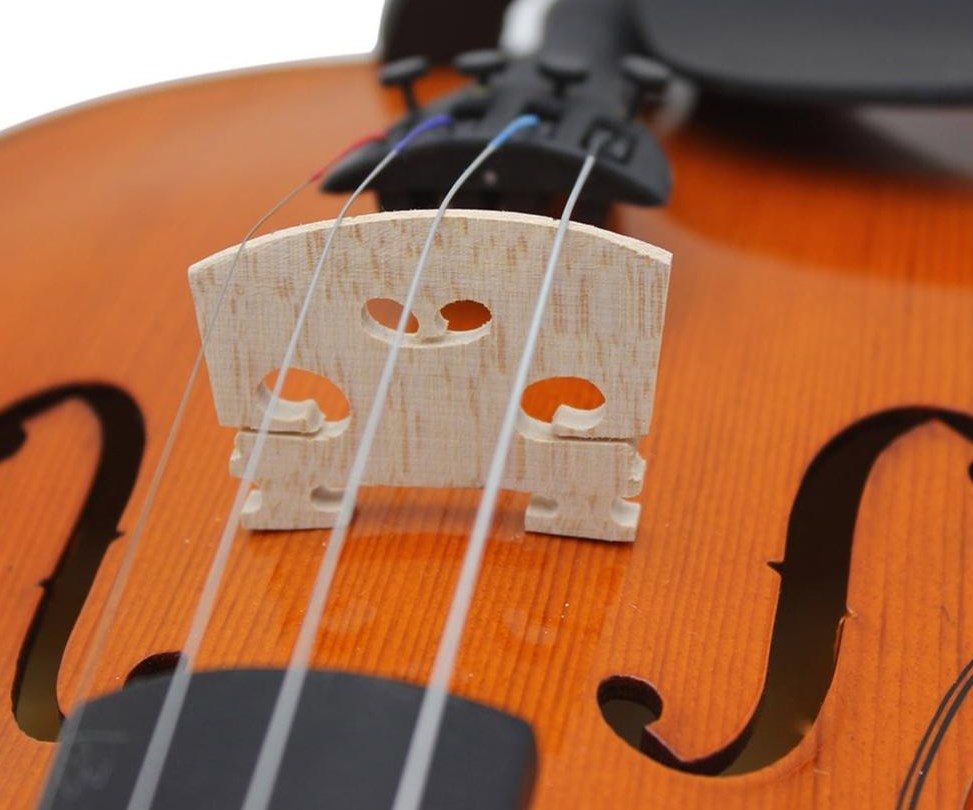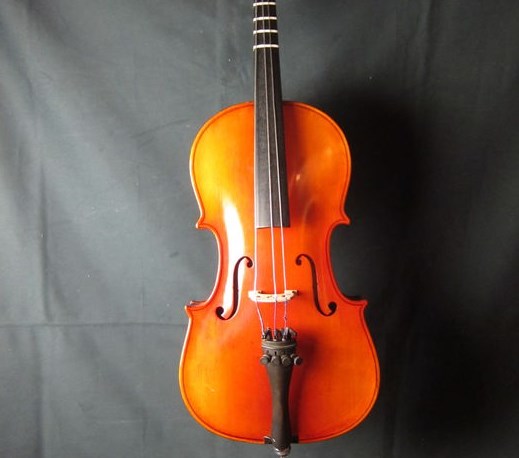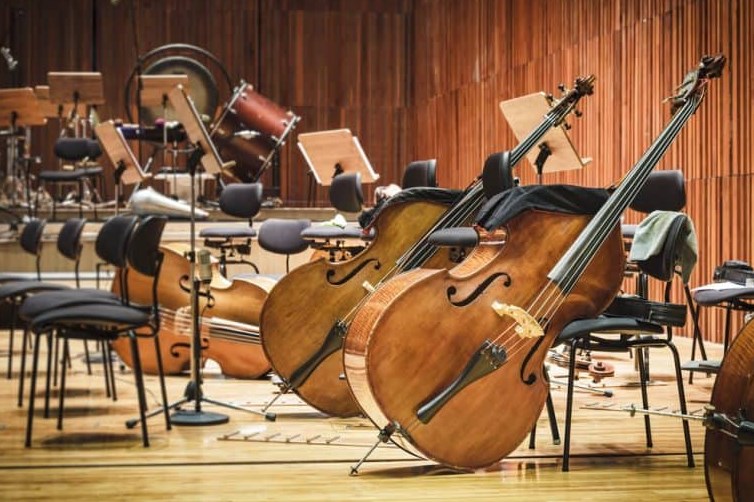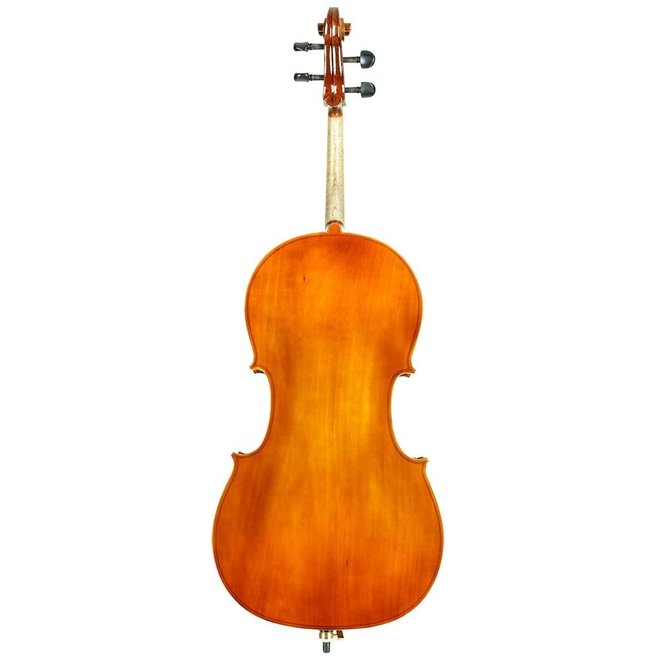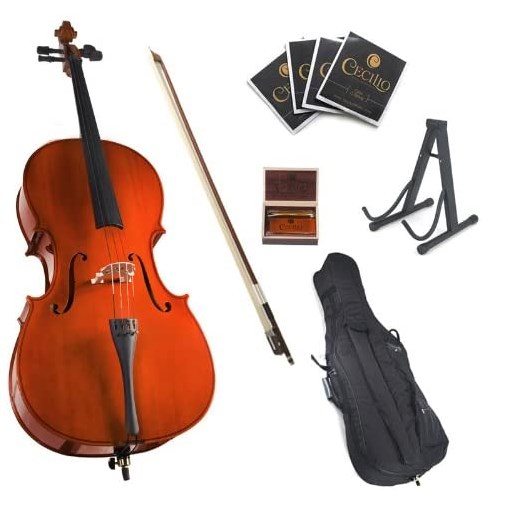- Best Violin Stand Options Guide - May 26, 2022
- Best White Violin Options - May 22, 2022
- How to Find the Best 7/8 Violin - May 19, 2022
Purchasing a cello can be an incredibly confusing process, regardless of whether you are purchasing it for your child. There are a ton of variables to consider such as what brand to go for and what price range you should be searching within, but perhaps the most important variable is the size.
If you’re reading this article, there’s a high chance that you’ve already done some research and have decided that 1/8 is the cello size for you or your child. That’s wonderful, making this decision is difficult, but there is still more to consider.
Throughout this ultimate guide to the best 1/8 cellos, I will be providing you with everything you need to know regarding choosing only the best cello for you. I’ve been performing and teaching this instrument for years now, so I’ve got a lot to say on the matter. Read on to find out my thoughts!
Bottom Line Up Front
The Cecilio CCO-100 is my top pick for best 1/8 cello because of its fantastic affordability and accessibility for new cellists. ⅛ cellos do not last long due to upgrades, so I think that Cecilio provides the perfect product to tackle such an obstacle.
Is 1/8 the Size for Your Child?
Before we get any further into this guide, I’m going to need you to have a long and hard think about whether 1/8 is the cello size for your child. There is a lot of information online that you have probably already come across, but you must take a step back to assess your situation.
Generally, experts recommend that 1/8 cellos are most suitable for children aged between 5 and 6 years old. This is certainly a good general rule to follow, but it’s not as simple as this. As you probably already know, all children grow at different rates, and if your child is of a different size to most people in their age group, these rules may not apply.
The best thing you can do to combat this problem is to take your child to a cello shop and ask a professional to help them find the perfect size. Perhaps your child is currently too small for a 1/8 cello but is going through a growth spurt, or perhaps they are within the 1/8 range but are rapidly approaching the size that would suit a ¼ cello.
Testing different cellos sizes is one of the most important things you can do. All the online information in the world will never help as much as sitting down with a cello expert and working out an appropriate cello size. Get this out of the way and if you’re still happy with 1/8 as your child’s cello size, read on to find out how to pick the best models!
The Criteria for an Excellent 1/8 Cello
If you have confirmed that you are looking for a 1/8 cello, it’s time to begin the next step – purchasing the cello itself. Despite narrowing down the sizes, you will still discover that there is an enormous variety of cello brands on the market, so many in fact that it can become quite intimidating. What exactly are you supposed to look for in an excellent 1/8 cello, and are there any factors that make a specific model stand out? There sure is – let’s take a look.
Comfort
Let’s start with what I would consider the most important factor – comfort. Cellos are large, heavy, and slightly awkward instruments, especially when you first begin to learn them. Whilst your child will certainly get used to this over time, the last thing you want is to buy a 1/8 cello that is not comfortable for them to practice with.
I cannot tell you how many times I have had a new cello student turn up to my practice room with a 1/8 cello, only to discover that they can barely handle the weight of the instrument let alone reach across the fingerboard. Sure, their parents sized them up and determined that 1/8 should be the appropriate size for them, but when it comes down to practicality, it just doesn’t work.
This is yet another reason why it is so important that you test cellos out in music stores. Not every cello is built the same, and 1/8 models across various brands might be wider, thicker, or heavier. The only way to find this information out is to test them, speak to your child, and ask them how comfortable they are. You should bear in mind that it will always be a bit awkward, but they should still be able to comfortably hold the instrument and reach across the fingerboard.
Quality vs Budget
The next important quality to consider when purchasing a 1/8 cello is the balance between quality and cost. Let’s be honest – any form of purchase whether it is a musical instrument or a new TV will generally have a better build quality if it is more expensive, it’s an undeniable fact of life.
This can make it pretty tempting to drop as much cash as possible on your child’s 1/8 cello. If money is no object and you have a large budget to spend on this, go for it – what have you got to lose? However, if this does not sound like your situation, I would advise you to think carefully about how much you want to spend on this instrument.
The main reason for this is that your child will not be playing with a 1/8 cello for long. As mentioned earlier, the size is generally advised for five to six-year-olds, so they will likely be comfortable using it past the age of seven. As long as they enjoy learning the instrument and want to continue past this age, you are inevitably going to have to pay for an upgrade.
For this reason, I would recommend that you find a 1/8 cello that is of decent quality but doesn’t go overboard. I would go for something modest to begin with, and assess my child’s passion for playing the instrument. If they’re still sticking with it when they are ready for ¾ or 4/4 cellos, this is when I’d start saving up for that hard-carved cello with the highest quality ebony fittings.
Accessories
We’ve all been there on Christmas day – you’ve bought your child a games console or a new toy and they’ve unwrapped it, only to discover that you forgot to buy the batteries or some other accessory. This means that they can’t use it immediately, and you then have to head back to the shops to purchase the required accessories.
I have encountered this so many times when it comes to cellos. Sure, essential accessories such as the bow and strings should be included with the instrument, but did you think about a case, a cello stool, or cello rosin? It’s pretty difficult to get started with the cello without these accessories, so you should look for 1/8 cellos that come bundled with them.
Tons of cello brands out there provide beginner 1/8 cellos in the form of “outfits”, meaning they come with all of these essential accessories so that your child can begin practicing immediately. Other brands may require you to purchase them separately and this is fine too, but ultimately, it’s going to be easier if you can find all of the accessories within the same shop.
Insurance and Warranty
The last major qualities that I would look for in a 1/8 cello are insurance and warranty. This may not be the first thing that comes to mind when you search for a cello for your child – you probably just want to focus on finding something that sounds high quality.
However, I would highly recommend that you find a cello with a great reputation for providing insurance and warranty plans. The reason for this is simple – children are clumsy and make mistakes all the time, and it is almost inevitable that at some point in the learning process, your child is going to drop their cello.
Hopefully, a drop like this will not damage the instrument too much, but it’s good to know that if this happens, the cello brand will be there to support you financially. Trust me – you will be thanking me later when you discover how much it costs to get a cello repaired privately through a professional luthier, it’s extortionate!
My Top 1/8 Cello Picks
Now that we’ve investigated exactly what makes an excellent 1/8 cello and whether you should even be purchasing one in the first place, I’ve decided to put together the following list of my three top 1/8 cello choices. I’ve made sure to choose examples that I have used across a range of price points, so hopefully, there will be one that will interest you too!
D Z Strad Student Cello Model 101
The first 1/8 cello that I wanted to mention is the D Z Strad Student Cello Model 101. Earlier I mentioned that I would recommend choosing a 1/8 cello that is relatively cheap due to the rapid growth of children unless you have money to splash. If money is no object and you want the finest beginners cello for your child, this is a model that you should consider!
You can find these cellos for anything between $1,400 and $2,000, but this is certainly represented in the quality. They are hand-crafted models fitted with spruce tops, maple backs, and ebony fingerboards, presenting a tone and amplification that is incredibly clear and resonant. It also comes with a bow, spare strings, rosin, and a case, not to mention a long warranty and flawless reputation. It’s a seriously good 1/8 cello, but for the majority of learners, it’s simply going to be unnecessarily high quality as an upgrade is likely to be just around the corner!
Pros
- An excellent quality 1/8 cello complete with ebony fittings
- Very good amplification and resonance for a beginner cello
- Hand-crafted by professional luthiers
- Comes with a bow, strings, rosin, and case
Cons
- A very expensive option for a 1/8 cello
- The high-quality sound will generally be wasted on a beginner cellist
Samuel Eastman VC80
The next 1/8 cello on my list of recommendations is the Eastman Strings Samuel VC80. Ask any cellist, violinist, or violist, and they will tell you that Eastman Strings is an exceptional brand – they are well known for building instruments of excellent quality, hand-crafting them at a reasonable price. This particular cello can be bought for anything between $800 and $1,300, making it an excellent mid-range option.
The pricetag may still seem a little expensive, but in my opinion, it is much better value for money than the D Z Strad example. I’m a huge fan of the sturdy build quality of this cello and the excellent durability, these qualities make it a particularly good option for young children. They are also easy to maintain requiring minimal additional effort to keep them up to scratch, and the cello comes with ebony fittings, such as the fingerboard and tailpiece. It’s an overall solid 1/8 cello that provides fantastic quality from a well-respected brand without completely breaking the bank.
Pros
- If you can find one for the minimum of ~$800, this cello is a serious bargain
- Ebony fingerboard, fittings, and tailpiece
- Very durable and stable, ideal for clumsy children
- Built professionally by a well-respected brand
Cons
- Despite the high value for money, the price range may still be too high for a beginner 1/8 cello
- Most accessories need to be purchased separately
Cecilio CCO-100
The final 1/8 cello that I simply had to recommend is the classic Cecilio CCO-100. This is quite possible the cello that I have come across most throughout my career as a music teacher – it is everywhere, and there is a very good reason for this. Essentially, it all comes down to the fact that despite having a very low price of around $250, the quality is more than good enough for a beginner.
Sure – this cello doesn’t have the ebony fittings and it hasn’t been hand-carved by a professional luthier, but it sounds wonderful and feels comfortable to play. It also comes with a lengthy warranty and insurance options, and a huge variety of accessories including a bow, case, rosin, spare strings, and even a cello stand! In my opinion, this checks all of the boxes – it’s a 1/8 cello that is made with beginners on a budget in mind, and from my experience, this is usually the case.
Pros
- An exceptionally low price of around $250
- Comes bundled with just about every accessory your child could need
- Cecilio has an excellent reputation and provides brilliant warranty and insurance schemes
- Sounds great considering the low price tag
Cons
- The low price tag comes with a compromise in quality, with no ebony being used throughout the build
- A seasoned cellist will notice a lack of resonance and tonal wholeness.
FAQ
We sure have covered a lot of information throughout this guide! I’ve discussed the process of choosing 1/8 cellos as your child’s perfect size, the qualities you should look for in an excellent 1/8 cello, and finished off with my top three picks. Before I leave you, let’s take a look at the answer to four of the most frequently asked questions that I receive about 1/8 cellos!
Answer: 1/8 cellos are generally considered to be most suitable for children between five and six years old, but you should always try out a variety of sizes in a music store to see what works best for your child.
Answer: You can purchase a 1/8 cello for your child from as low as $200 from companies such as Cecilio, but if you want to splash out on luxurious quality, brands such as D Z Strad provide options that cost $1,500 or more.
Answer: Considering that they are designed to be used by five to six-year-old children, 1/8 cellos will generally only get a couple of years of use before a ¼ upgrade is required, and therefore it is recommended to save spending the big bucks for larger sizes.
Answer: No – whilst 1/8 is generally considered to be the smallest mainstream cello size, some brands built 1/10 or even 1/16 cellos.
Final Thoughts
I hope that this guide has been useful to you overall! Purchasing a 1/8 cello for a young child can feel like an incredibly daunting task, but as long as you consider the criteria listed in this guide and test instruments out in music stores, I am sure that you will get there eventually.
It’s been a long time since I’ve needed to purchase such a small cello, but if I had to do it again, I would most definitely go for the Cecilio CCO-100. This cello is incredibly affordable yet comes with everything a child needs to take their first steps as a young cellist, and in my opinion, anything pricier is a bit of a waste unless you really can justify spending the cash.
Good luck on your journey to find the perfect 1/8 cello, and I just hope that your child perseveres with the instrument as much as I did. It will be a hard learning process, to begin with, but once the final hurdles have been passed, I’m sure they will get on fantastically.
Looking for more interesting readings? Check out:


